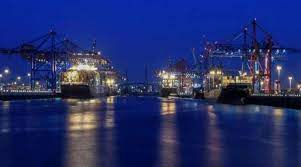CURRENT AFFAIRS
Get the most updated and recent current affair content on Padhaikaro.com
All about India’s blue economy
- IAS NEXT, Lucknow
- 07, Mar 2022

What is the issue?
For India Blue economy could be the next force multiplier of GDP and well-being, provided sustainability and socio-economic welfare are centered.
What is Blue Economy?
- Blue economy refers to the ocean resources available in the country that can be harnessed to aid the production of goods and services.
- It enables economic growth, environmental sustainability, and national security.
How significant is Blue Economy for India?
- India’s blue economy is a subset of the national economy.
- It comprises of
- ocean resources.
- human-made economic infrastructure in marine, maritime, and onshore coastal zones.
- India has
- 7,500 km of coast line (9/29 states as coastal).
- 1,382 islands.
- Exclusive Economic Zone of over 2 million square kilometers.
- 199 ports, including 12 major ports that handle approximately 1,400 million tons of cargo each year.
- It provides a vast socio-economic opportunity for India to utilise ocean resources for societal benefit responsibly.
- EEZ of India has a bounty of living and non-living resources with significant recoverable resources such as crude oil and natural gas.
- Also, the coastal economy sustains over 4 million fisher folk and coastal communities.
What are the important elements of a draft Blue Economy Policy?
- According to the draft policy, the blue economy is one of the ten core dimensions for national growth.
- It dwells on policies across several key sectors to achieve the holistic development of India’s economy.
- The draft document focuses on seven thematic areas such as
- national accounting framework for the blue economy and ocean governance..
- coastal marine spatial planning and tourism.
- marine fisheries, aquaculture and fish processing.
- manufacturing, emerging industries, trade, technology, services, and skill development.
- logistics, infrastructure and shipping including transhipment.
- coastal and deep-sea mining and offshore energy.
- security, strategic dimensions, and international engagement.
Has India fully leveraged this part of its overall economy?
- India has tapped its vast coastline to build ports and other shipping assets to facilitate trade.
- However the entire spectrum of its ocean resources is yet to be fully harnessed.
- Several countries have undertaken initiatives to utilise their blue economy.
- For instance, Australia, Brazil, the United Kingdom, the United States, Russia, and Norway have developed dedicated national ocean policies with measurable outcomes and budgetary provisions.
- Canada and Australia have enacted legislation and established institutions at federal and state levels to ensure progress and monitoring of their blue economy targets.
- With a draft blue economy policy framework of its own, India is now all set to harness the vast potential of its ocean resources.
What is the recent agreement with France?
- Recently India and France has signed a roadmap on blue economy and pledge to increase bilateral exchange and preservation of marine resources through economic, infrastructure and scientific cooperation.
- This will facilitate contacts between economic actors, business heads organisations, technopoles and maritime clusters of the two countries.
- Cross investments as well as visa issuance to entrepreneurs active in the blue economy will be encouraged.
What are some of the domestic measures taken so far?
- Recent measures include
- Indian Ocean Dialogue
- National Policy on Marine Fisheries, 2017
- O-SMART Scheme
- Deep ocean mission